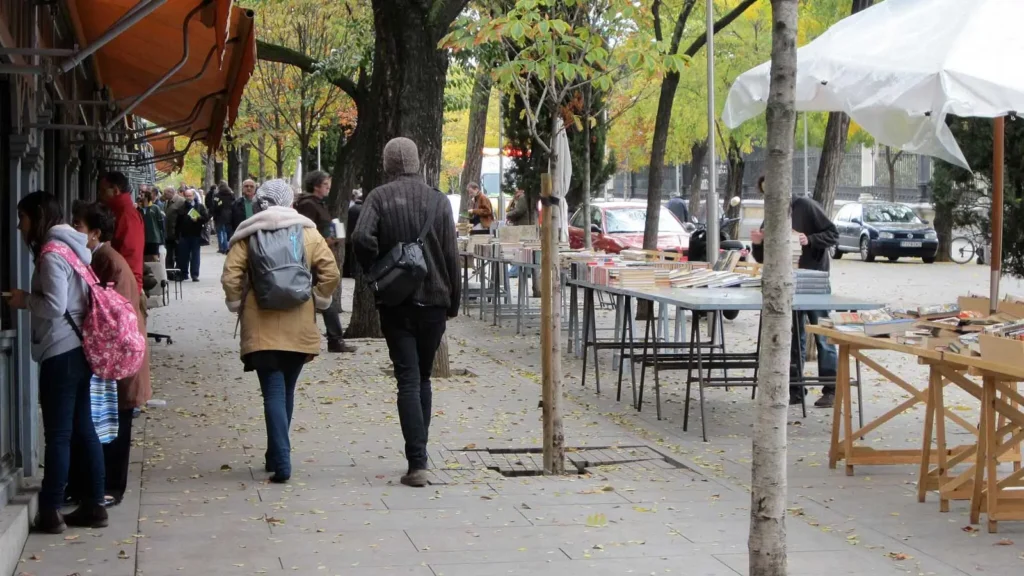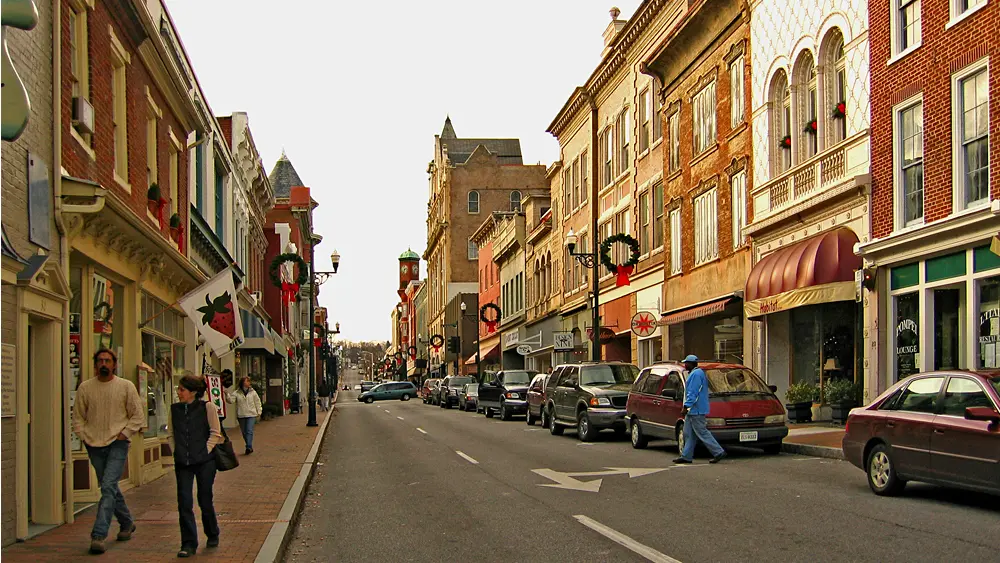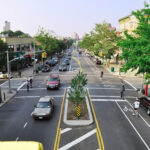In cities across the globe, walkable neighborhoods are gaining renewed attention as people seek healthier lifestyles, vibrant communities, and more sustainable urban environments. But what exactly makes a neighborhood walkable, and why should it matter to you?
In this article, we’ll explore the meaning of walkability, the many benefits it brings, the core elements that define a walkable neighborhood, and how cities and residents can support walkable living.
🏘️ What Is a Walkable Neighborhood?
A walkable neighborhood is an area where residents can easily reach daily necessities—such as groceries, schools, parks, shops, and public transit—without the need for a car. Walkability is measured by how safe, convenient, and enjoyable it is to walk in an area.
Key Characteristics:
- Safe sidewalks and pedestrian crossings
- A mix of residential, commercial, and public spaces
- Compact, human-scaled design
- Connectivity to public transit
- Green spaces and public gathering areas
Walkable neighborhoods reduce car dependency, promote physical activity, and help create more vibrant, inclusive communities.
🌟 Benefits of Walkable Neighborhoods
1. Healthier Lifestyles

Walking regularly improves cardiovascular health, reduces stress, and promotes mental well-being. Living in a walkable area naturally encourages physical activity without requiring trips to the gym.
2. Stronger Communities
Walkable neighborhoods encourage face-to-face interactions between neighbors, fostering a greater sense of belonging, safety, and social trust.
3. Economic Vitality
Areas with high foot traffic often see more local shopping and dining, supporting small businesses and increasing property values.
4. Environmental Sustainability
Reduced reliance on cars lowers greenhouse gas emissions, improves air quality, and cuts down on urban noise pollution.
5. Accessibility and Inclusion
Walkable design benefits everyone, especially the elderly, children, and people without access to a vehicle. It creates more equitable and accessible cities.
🏙️ What Makes a Neighborhood Walkable?
Creating a walkable neighborhood involves several key urban design elements:
🛣️ 1. Safe and Well-Maintained Infrastructure
- Wide, clean sidewalks
- Clearly marked crosswalks
- Pedestrian-friendly signals
- Traffic-calming features like speed bumps or curb extensions
🏪 2. Mixed-Use Development
A combination of homes, offices, schools, restaurants, and retail in close proximity encourages walking rather than driving.
🌳 3. Public Spaces and Greenery
Parks, plazas, and street trees enhance the walking experience by offering shade, seating, and social gathering spots.
🚏 4. Transit Connectivity
Walkable neighborhoods are often well-connected to buses, trains, or bike-share systems, making it easier to navigate the city without a car.
🧭 5. Compact and Human-Scale Design
Short blocks, narrow streets, and low-rise buildings make areas feel more approachable and navigable on foot.
📊 Walkability Score: What Does It Mean?
The Walk Score® is a popular tool that rates the walkability of neighborhoods based on proximity to services and pedestrian-friendliness. Scores range from 0 (car-dependent) to 100 (walker’s paradise).
- 90–100: Walker’s Paradise
- 70–89: Very Walkable
- 50–69: Somewhat Walkable
- 0–49: Car-Dependent
Higher walkability scores are often linked to higher real estate value and resident satisfaction.
🏡 Examples of Highly Walkable Neighborhoods

- Greenwich Village (New York City, USA): A historic, compact district with shops, schools, and subway access within walking distance.
- The Plateau (Montreal, Canada): Known for cafes, bike lanes, and colorful homes—perfect for daily walking.
- Shibuya (Tokyo, Japan): A dense, mixed-use urban hub with excellent pedestrian infrastructure and transit access.
- Fitzroy (Melbourne, Australia): A trendy suburb with walkable streets, boutique shops, and a strong community feel.
👣 How to Make Your Neighborhood More Walkable
Whether you’re a city planner, a homeowner, or a local activist, there are steps you can take to improve walkability:
For Local Governments:
- Invest in sidewalk and street maintenance
- Enforce zoning that allows mixed-use buildings
- Install pedestrian lighting, benches, and bike racks
- Prioritize traffic-calming measures and crosswalks
For Residents:
- Support local businesses and walkable developments
- Participate in neighborhood planning meetings
- Advocate for safer streets and pedestrian-friendly policies
- Use public transport or walk for short errands whenever possible
📈 The Future of Walkable Cities
As urban populations grow and concerns about climate change rise, walkable neighborhoods are becoming a cornerstone of sustainable urban planning. Cities that prioritize walkability are investing in:
- Car-free zones
- Bike and pedestrian-only streets
- Smart city tech for traffic and pedestrian flow
- Mixed-use zoning reforms
- Affordable housing near transit hubs
FAQ’s
1. What makes a neighborhood truly walkable?
A truly walkable neighborhood offers safe sidewalks, short distances between homes and amenities, good lighting, green spaces, and easy access to public transportation—all designed to prioritize pedestrians over cars.
2. How do walkable neighborhoods benefit public health?
Walkable areas promote daily physical activity, reduce air pollution from cars, and encourage social interaction, all of which contribute to better cardiovascular health, lower obesity rates, and improved mental well-being.
3. Is walkability only important in big cities?
Not at all. Walkability benefits towns and suburbs too. Even smaller communities can enhance walkability by adding sidewalks, local shops, parks, and bike lanes within neighborhoods.
4. How is walkability measured?
Walkability is often measured by tools like Walk Score®, which assesses how close a location is to essential amenities such as grocery stores, schools, and transit options on foot.
5. Do walkable neighborhoods have higher property values?
Yes. Studies show that homes in walkable neighborhoods often command higher prices and appreciate faster, thanks to convenience, livability, and reduced car dependency.
6. What role does public transit play in walkable communities?
Efficient and accessible public transit extends the reach of walkable neighborhoods by connecting people to broader destinations without the need for cars, reinforcing a car-free or car-light lifestyle.
7. Can walkability reduce traffic congestion and emissions?
Absolutely. By encouraging people to walk or bike for short trips, walkable neighborhoods lower vehicle usage, which helps decrease road congestion and reduce greenhouse gas emissions.
8. How can residents advocate for improved walkability?
Residents can join local planning meetings, support pedestrian-friendly zoning laws, push for crosswalks and bike lanes, and work with community organizations to promote safer, greener street design.
Conclusion: Walking Toward Better Living
Walkable neighborhoods aren’t just trendy—they’re transformational. They improve health, reduce pollution, boost local economies, and build stronger communities. Whether you live in a bustling city or a quiet suburb, supporting walkability is a step toward a better, more livable future. So next time you choose a place to live or travel, consider this: Can you walk to what matters most?



















